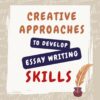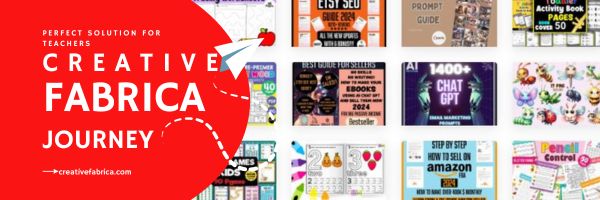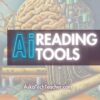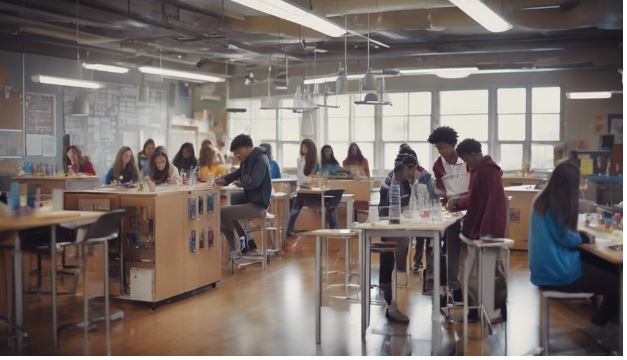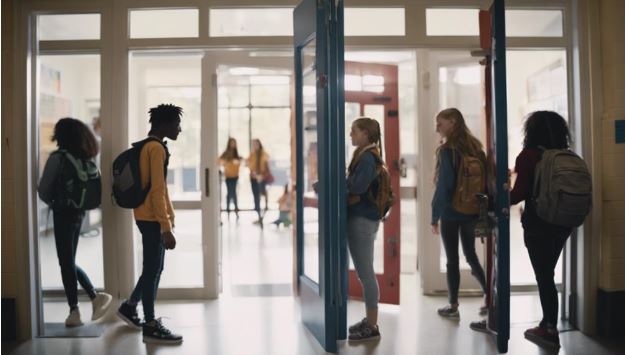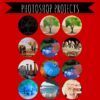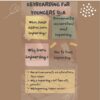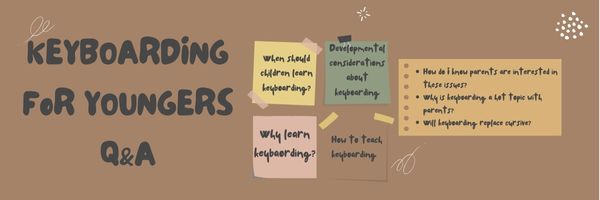Author: Jacqui
Creative Approaches for Developing Essay Writing Skills
The Cambridge Dictionary defines ‘essay’ as”
a short piece of writing on a particular subject
Most students write their first essay by third grade, probably enjoy the process because of its non-threatening narrative exploration of their thoughts, but by Middle School, the rules and requirements that made essay writing fun change:
In a school test, an essay is a written answer that includes information and discussion, usually to test how well the student understands the subject.
The Ask a Tech Teacher team came up with fresh rules we think are less threatening and more geared to enabling students to enjoy this important writing style. I think you’ll find some of these helpful:
Creative Approaches for Developing Essay Writing Skills
As a college student, the ability to write well-written essays is an essential skill that transcends academic disciplines and serves as a vital tool for effective communication throughout one’s personal and professional life, yet the process of developing this aptitude often presents a formidable challenge that requires a multifaceted approach encompassing various creative techniques and methodologies. Exploring diverse writing exercises, experimenting with different perspectives, and seeking inspiration from various sources can cultivate creativity and enhance essay writing skills, with the option to have professionals write me an essay providing valuable insights and further honing one’s craft. Start small. (more…)
Share this:
Creative Fabrica–the Perfect Solution for Teachers, Creators, and Anyone In a Hurry
I–like many teachers–do a lot of prep for my teaching, often requiring digital desktop publishing platforms. Between newsletters for parents, announcements on social media, communications for students and parents, and more, it became a challenge to demonstrate the excitement and engagement of learning through what could be boring tools.
Then I got an email from the folks at Creative Fabrica. My norm with these sorts of solicitations (I get about a dozen a week) is give the website ten seconds to grab me or lose me. With Creative Fabrica–I was sold faster. How had I never seen this amazing website? It seemed to hold the answer to so many of my daily tasks, offering quick professional, clean communication that save time. 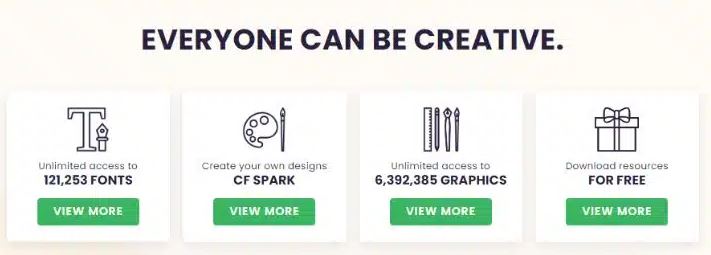
 What is it
What is it
Creative Fabrica is a digital marketplace out of Amsterdam that offers a wide range of creative resources for designers, crafters, creators, and to my specific area of interest–teachers. They offer over 9 million products from 50,000 designers besides what users design themselves. Users can access fonts, graphics, SVG files, 3D, tools, bundles, embroidery designs, mockups, teacher resources, and more for various creative projects.
[gallery type="square" ids="68685,68686,68687"]
You can pay ala carte for individual items or sign up for a monthly/yearly subscription and download unlimited items. Additionally, the platform features tutorials and community forums to support and inspire creators.
Share this:
Tech Tip #90: Don’t Be Afraid of Mulligans
As a working technology teacher, I get hundreds of questions from parents about their home computers, how to do stuff, how to solve problems. Each week, I’ll share one of those with you. They’re always brief and always focused. Enjoy!
Q: Some kids are hard workers, but they just don’t get computers. Their effort deserves a good grade, but their product is nowhere near class requirements. What can I do?
A: Don’t be afraid to give students a Mulligan–a do-over for you non-golfers. Some students don’t perform well under the pressure of a deadline. Some are so sure they’re no good at technology, that becomes their reality. Offer students a second chance if they’ll work with you after school. I have had countless students take advantage of this and come out after a few of those sessions strong and confident in class. All they had to see was that they could do it. Maybe some simple phrasing confused them and you can clear that up. Maybe the noise of a full class distracted them. Whatever it is, if you can show them how to find alternatives, solve their problems, they can apply that to technology class and other classes.
Most of the students I help 1:1 only need a few projects and then I never see them again for help. In fact, their confidence is so improved, they often are the kids who come in during lunch to offer assistance to other struggling students. (more…)
Share this:
4 Innovative Ways to Enhance Reading Comprehension with AI Tools
I’m excited about this post from the Ask a Tech Teacher crew–AI Tools for reading comprehension. There are so many directions this could go!
4 Innovative Ways to Enhance Reading Comprehension with AI Tools
Struggling to grasp the essence of a dense PDF or wishing students could wrestle more effectively with complex texts? The key may reside in AI-powered reading assistants, a broad category encompassing everything from summarizers to intelligent note-taking platforms.
Let’s explore five innovative strategies that make the most of these AI capabilities, tailored not only to keep pace with rapid technological advancements, but also to foster enhanced educational experiences! (more…)
Share this:
Engaging All Learners: Expanding High School Options for Success
High School collects a diverse group of students into a large learning community, but it also prepares teenagers for a future as variable as any we can imagine. How is it possible to accomplish that? The Ask a Tech Teacher team has some ideas on balancing varied learning styles with needs to provide students their best chance at success in college or career–whichever they choose:
Engaging All Learners: Expanding High School Options for Success
Think about Albert Einstein, who, despite his genius, struggled in traditional school settings. Today, as education leaders, you’re faced with an increasingly diverse student population, each with unique learning styles, abilities, and aspirations.
Yet, the one-size-fits-all model persists in many high schools. You might be wondering if there’s a better way to engage all learners. Could we expand high school options to guarantee every student’s success?
Let’s explore this, considering some innovative strategies and how they are transforming education as we understand it.
Understanding Different Learning Styles
Your journey to success begins with comprehending the different learning styles and how they impact your educational experience. You see, not everyone assimilates information the same way. Some students are visual learners, digesting information better when they see it in graphs, charts, and pictures. Others are auditory learners, absorbing information more efficiently when they hear it. Still others are kinesthetic learners, who understand better through physical activity or hands-on experience.
Recognizing your learning style isn’t just about understanding how you learn. It’s about maximizing your educational opportunities, tailoring your study habits to your unique style, and ensuring you’re able to absorb and retain information effectively.
You might find you’re not confined to one style. Many people are multimodal learners, integrating two or more styles. By understanding these varying styles, you’re able to adopt a more flexible approach to your education.
Understanding your learning style isn’t just beneficial, it’s crucial. It’s your key to revealing your full potential, optimizing your learning experience, and ensuring your journey to academic success is as efficient and enjoyable as possible.
The Limitations of Traditional High Schools
While understanding your learning style can greatly enhance your educational journey, it’s also worth examining the constraints that traditional high schools may impose on your learning process. These institutions typically adhere to a one-size-fits-all approach, offering a rigid curriculum that doesn’t necessarily cater to the diverse learning needs and styles of all students. You might find that the pace is too fast or too slow for you, or that the teaching methods don’t resonate with your style of learning.
Traditional high schools often prioritize rote learning and standardized testing, which can limit your ability to develop critical thinking and problem-solving skills. They also tend to focus heavily on academic achievement, often neglecting other important facets of education like social skills, emotional intelligence, and practical life skills.
In addition to traditional high schools, online schools in Arizona have emerged as an alternative education option, providing flexibility and personalized learning experiences for students. These virtual institutions offer a range of courses and programs tailored to individual learning styles and needs.
The Rise of Alternative Education Options
In response to these limitations, alternative education options have surged in popularity, offering more flexible and personalized approaches to learning. These alternatives, ranging from charter schools to homeschooling, provide opportunities to cater to individual learning styles and interests that aren’t always met in traditional high school settings.
You’ll find that charter schools, for instance, are publicly funded but independently run, offering unique educational philosophies or specialized curricula. They provide a choice for parents and students dissatisfied with their assigned public schools. Homeschooling, on the other hand, offers the utmost flexibility, allowing learning to be fully individualized and paced to a student’s specific needs.
Online and distance learning programs have also gained traction. These platforms often combine self-paced study with live, interactive instruction, balancing independence with support. Ultimately, vocational and technical education programs equip students with practical skills for direct entry into the workforce.
Keep in mind, however, that while these alternatives can offer flexibility and personalization, they also come with their own challenges. It’s important to weigh the benefits against potential drawbacks to determine the best fit for each learner’s educational journey.
The Role of Technology in Personalized Learning
Building on the trend of diverse educational approaches, we must also consider the significant impact that technology has on personalized learning. As an educator, you’re at the front lines of this digital revolution. Technology, when used correctly, can facilitate tailored instruction that addresses individual learning styles, aptitudes, and pace of learning.
Consider digital platforms that allow you to monitor student progress in real-time. You can identify areas of weakness and strength, adjust lesson plans accordingly, and provide immediate feedback. That’s personalized learning at its best.
Let’s not forget about the wealth of online resources available. Whether it’s an interactive math game or a virtual reality tour of the Colosseum, technology opens up new avenues of learning that were previously inaccessible. This makes education not just personalized, but also engaging and relevant.
However, it’s important to keep in mind that technology isn’t a magic solution. It’s a tool, and it’s only as effective as its use. You must be ready to adapt your teaching strategies, align the use of technology with learning objectives, and ensure equality in access. With careful consideration and planning, technology can indeed revolutionize personalized learning.
Vocational Education: A Viable Pathway
Paving the way for diverse career opportunities, vocational education offers a practical, skills-focused alternative to traditional academic paths. It’s not just about providing another choice; it’s about redefining the meaning of success in education and career planning.
Vocational education, with its emphasis on hands-on training and real-world application, can be a game-changer for you. It’s uniquely designed to bridge the gap between theoretical knowledge and practical skills. This approach can put you on a fast track to a fulfilling career, reducing the time and financial investment often associated with a traditional four-year degree.
Consider these compelling reasons why vocational education deserves your attention:
- It empowers you with job-specific skills, increasing employability.
- It allows for faster entry into the workforce.
- It promotes a learning-by-doing approach, reinforcing understanding.
- It offers a wide variety of career paths to pursue.
- It can lead to higher early-career salaries compared to some traditional degree holders.
Implementing Inclusive Education Policies
Shifting our focus to inclusive education policies, understanding how they’re key to ensuring that every student, regardless of their background or ability, has access to quality education is essential. These policies aim to eliminate all forms of discrimination and promote equal opportunities for all students.
To implement inclusive education policies, you’ll need a thorough approach that encompasses the entire school environment. You’ll need to scrutinize current practices and challenge the existing barriers to inclusion. This involves not only adapting curriculums and teaching strategies but also rethinking attitudes towards diversity and inclusion.
Promoting an inclusive school culture is another important aspect. This means fostering a positive attitude towards diversity, promoting respect for individual differences and ensuring that all students feel valued and included.
In addition, providing adequate training for teachers and school staff is necessary for the successful implementation of inclusive policies. They need to be equipped with the skills, knowledge, and attitudes necessary to respond to the diverse needs of their students.
Case Studies: Successful High School Innovations
Let’s investigate a few case studies that showcase the impact of innovative approaches in high schools, offering powerful insights into the potential for real change in our education system.
One such case is the High Tech High in San Diego. Built on a premise of project-based learning, it has been a significant success, with graduation and college acceptance rates consistently higher than national averages.
Now, consider the following points:
- Personalized Learning: Schools like Summit Public Schools use technology to customize student learning, making education more engaging and effective.
- Learning Through Internship: The Met School in Rhode Island redefines school experience by placing students in internships related to their interests.
- Integrated Studies: New Tech Network schools implement a curriculum that emphasizes real-world connections, fostering deeper understanding.
- Flexible Schedule: Big Picture Learning schools allow students to learn at their own pace, reducing stress and increasing productivity.
- Interdisciplinary Approach: Schools like Quest to Learn integrate subjects to provide a more holistic education.
These examples demonstrate that innovative changes can’t only improve student outcomes, but also transform the very nature of high school education.
Photo Source: https://i.postimg.cc/fW3TccMb/Engaging-All-Learners-Expanding-High-School-Options-for-Success.jpg
Here’s the sign-up link if the image above doesn’t work:
https://forms.aweber.com/form/07/1910174607.htm
“The content presented in this blog are the result of creative imagination and not intended for use, reproduction, or incorporation into any artificial intelligence training or machine learning systems without prior written consent from the author.”
Jacqui Murray has been teaching K-18 technology for 30 years. She is the editor/author of over a hundred tech ed resources including a K-12 technology curriculum, K-8 keyboard curriculum, K-8 Digital Citizenship curriculum. She is an adjunct professor in tech ed, Master Teacher, webmaster for four blogs, CSTA presentation reviewer, freelance journalist on tech ed topics, contributor to NEA Today, and author of the tech thrillers, To Hunt a Sub and Twenty-four Days. You can find her resources at Structured Learning.
Share this:
22+ Tips on How to Work Remotely
Life often interferes with work. Vacations, conferences, PD–all these take us away from our primary functions and the environment where we are most comfortable delivering our best work. I thought about this when I read an article by a technical subject teacher (math, I think) pulled away from his class for a conference. Often in science/math/IT/foreign languages, subs aren’t as capable (not their fault; I’d capitulate if you stuck me in a Latin language class). He set up a video with links for classwork and a realtime feed where he could be available and check in on the class. As a result, students–and the sub–barely missed him. Another example of teaching remotely arrives when schools struggle with the unusually high number of snow days. So many, in fact, that they were either going to have to extend the school year or lose funding. Their solution: Have teachers deliver content from their homes to student homes via a virtual set-up.
And then, of course, there’s COVID shut-downs. Nuff said.
All it took to get these remote systems started was a problem that required a solution and flexible risk-taking stakeholders who came up with answers. Before we talk about delivering education to the students, let’s talk about the best way teachers can make this work for themselves–mostly seated, in one room, without the constant to-and-fro of students and colleagues. Here are some ideas: (more…)
Share this:
Facing Fourth Grade: Tips for Parents Dealing with Academic and Social Challenges
Dealing with academic and social challenges in fourth grade can be challenging for parents. There are several strategies parents can use to support their children effectively. Here are ideas from the Ask a Tech Teacher team:
Facing Fourth Grade: Tips for Parents Dealing with Academic and Social Challenges
As our kids step into fourth grade, it’s a big deal! It’s a time when they’re diving into more challenging schoolwork and facing new social situations. For us parents, it can feel like we’re navigating uncharted waters alongside them. From helping with tough math problems to supporting them through friendship ups and downs, fourth grade brings its share of hurdles. In this article, we’ll talk about the common challenges we might run into as parents in fourth grade and share some down-to-earth tips on how to tackle them, making the journey smoother for both our kids and us.
Academic Challenges in Fourth Grade
Navigating the academic terrain of fourth grade entails a substantial shift towards a more intricate curriculum and heightened expectations. As students transition into this pivotal year, they are met with a multifaceted array of challenges, each demanding a nuanced approach for successful navigation. At the forefront of these challenges lies mathematics, a subject that undergoes a profound transformation as students delve into more advanced concepts.
With the introduction of fractions, decimals, and geometry, the mathematical landscape becomes notably complex, posing significant hurdles for students and parents alike. Concepts that were once straightforward now require a deeper level of understanding and application, leading to feelings of confusion and uncertainty among learners. This is where the importance of seeking external support becomes apparent. Enter the online math tutor for 4th graders, a beacon of guidance in the tumultuous sea of mathematical challenges. By leveraging the expertise of a qualified tutor, parents can provide their children with personalized assistance and targeted support tailored to their unique learning styles and pace. Whether it’s breaking down intricate equations, elucidating geometric principles, or fostering critical thinking skills, these tutors offer invaluable assistance that fosters not only understanding but also confidence in mathematical abilities.
Moreover, the academic challenges of fourth grade extend beyond mathematics, encompassing a diverse range of subjects such as science, language arts, and social studies. With this expanded academic landscape comes an increased workload, placing additional demands on students’ time and organizational skills. Managing this workload effectively becomes paramount, requiring students to develop strong time management strategies and study habits. Additionally, the transition to fourth grade often coincides with a heightened emphasis on independent learning and critical thinking skills, further complicating the academic landscape.
Yet, despite these challenges, there is ample opportunity for growth and success. By fostering a nurturing and supportive environment at home, parents can empower their children to overcome obstacles and thrive academically. This includes fostering open communication channels with teachers and school staff, advocating for additional support resources such as online tutoring services, and instilling a growth mindset that emphasizes resilience and perseverance in the face of challenges. Ultimately, by working together as a team and providing the necessary support and guidance, parents can help their children navigate the complexities of fourth-grade academia and emerge stronger and more confident learners. (more…)
Share this:
Cultivating a culture of collaboration in engineering education
National Engineers Week is just behind us. The Ask a Tech Teacher team has one more article discussing an oft-forgotten piece of engineering education: culture:
Cultivating a culture of collaboration in engineering education
The engineering education landscape is shifting because learning is no longer confined to classrooms. Schools and learners recognize that quality education must encompass holistic learning that nurtures academic excellence and cultivates essential life skills. Colleges and universities offering engineering programs are adjusting to the evolution by cultivating a culture of collaboration in education. An inclusive and collaborative environment empowers students to nurture curiosity, continuously improve engineering skills, explore new technologies, and create high-quality engineering solutions. In this post, we’ll explore the value of collaboration in engineering education and top strategies that schools can implement to cultivate a collaborative learning culture.
The case for collaboration in engineering education
Collaboration in engineering education is more than just teamwork; it entails cultivating a mindset that fuels a sense of shared purpose. Creating a culture of collaboration in learning is an indispensable skill in our interconnected world. Here are some of the ways that a collaborative learning culture helps engineering students to learn better and develop personal skills. (more…)
Share this:
#9: How to Look Like a Photoshop Pro–in Fifth Grade
Before trying this lesson, start with Photoshop for Fifth Graders: The First Step is Word, Autofixes, cloning, and cropping. Don’t worry. It’s not hard–just the basics.
Ready? Let’s start with what Adobe Photoshop is–a grown-up KidPix, and the default photo-editing program for anyone serious about graphics. This series of projects (available in 55 Technology Projects for the Digital Classroom Volume I) introduces students to a traditionally-challenging program in an easy to understand way, each scaffolding to the next, thus avoiding the frustration and confusion inherent in most Photoshop training.
Adobe Photoshop has an impressive collection of tools to add pizazz to pics. You might have students open their school picture for this project. They love working with their own image.
- #1: Artistic Renderings—artistic overlays that add flair to pictures. Go to Filter—artistic and it brings up dozens of choices. Try some (it gives a preview of the result) and select a favorite.
[gallery columns="2" ids="68588,68589"]
- #2: blur and smudge tools on left tool bar to soften the background, and sharpen a focal point.
- #3: Use Filter-render-clouds to create a cloudy background (the colors of your foreground and background tool)
Troubleshooting Tips
- I can’t get the right colors for the clouds (check your foreground and background tools. That’s where Photoshop takes the colors)
- I’m trying to drag the picture but I get an error message (Check your layers. Do the have the correct layer highlighted?)
- I don’t have Photoshop. (Try GIMP–it’s free)
Do you have questions? Please add a comment and I’ll answer. Thanks.
Here’s the sign-up link if the image above doesn’t work:
https://forms.aweber.com/form/07/1910174607.htm
Copyright ©2024 worddreams.wordpress.com – All rights reserved.
“The content presented in this blog is the result of my creative imagination and not intended for use, reproduction, or incorporation into any artificial intelligence training or machine learning systems without prior written consent from the author.”
Jacqui Murray has been teaching K-18 technology for 30 years. She is the editor/author of over a hundred tech ed resources including a K-12 technology curriculum, K-8 keyboard curriculum, K-8 Digital Citizenship curriculum. She is an adjunct professor in tech ed, Master Teacher, webmaster for four blogs, CSTA presentation reviewer, freelance journalist on tech ed topics, contributor to NEA Today, and author of the tech thrillers, To Hunt a Sub and Twenty-four Days. You can find her resources at Structured Learning.
Share this:
Keyboarding Pedagogy
Keyboarding for Youngers
A while ago, I participated in an online discussion about keyboarding for kids. The host thought it would be a yawner, but any tech teacher knows keyboarding is a controversial subject. In my classroom, it’s the most-asked question from parents, concerns like:
- When do students start?
- What are some of the developmental considerations about keyboarding?
- Why learn keyboarding?
- How do I know what questions parents are interested in about keyboarding?
- Why is it a ‘hot topic’ with parents?
- How do I teach keyboarding?
- Will keyboarding replace cursive?
The list goes on. On my blog, Ask a Tech Teacher, posts about keyboarding are read about thrice as often as any other topic.
So I enthusiastically answered every question the producer had with my thoughts from thirty years of teaching. One of the other guests was a children’s education expert who believed technology (and I guess, by transference, keyboarding) was the root of much of the increase in ADHD among children and this was her big opportunity to make her case. The last participant was the mom of a first grader there to share her keyboarding experiences (turns out, she was also the director of the early learning initiative at the New America Foundation, an author, and a prominent blogger). Surprisingly–or not–we agreed on many points and ended up having a good discussion where everyone learned.
Here’s a synopsis of the questions discussed: (more…)

